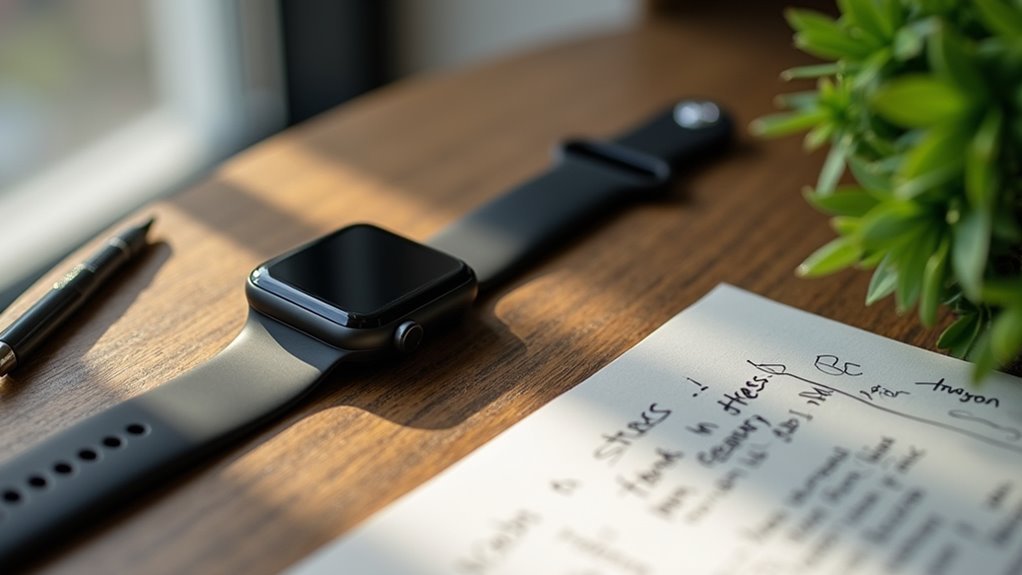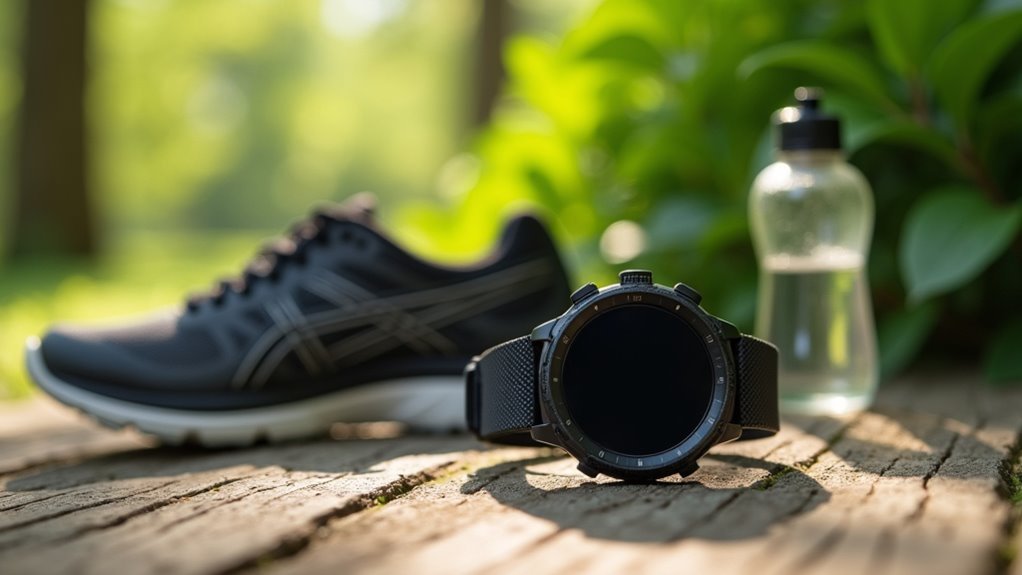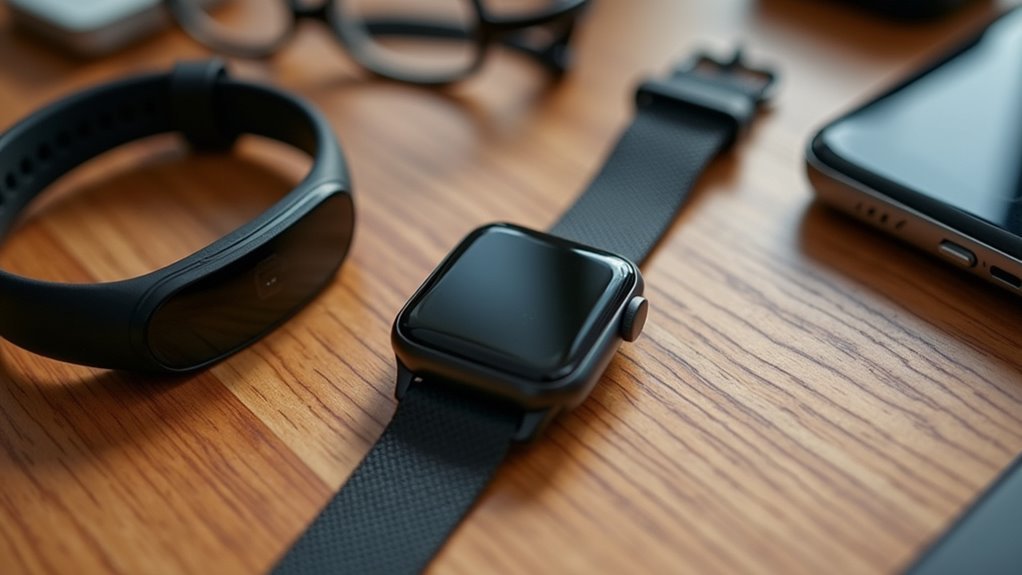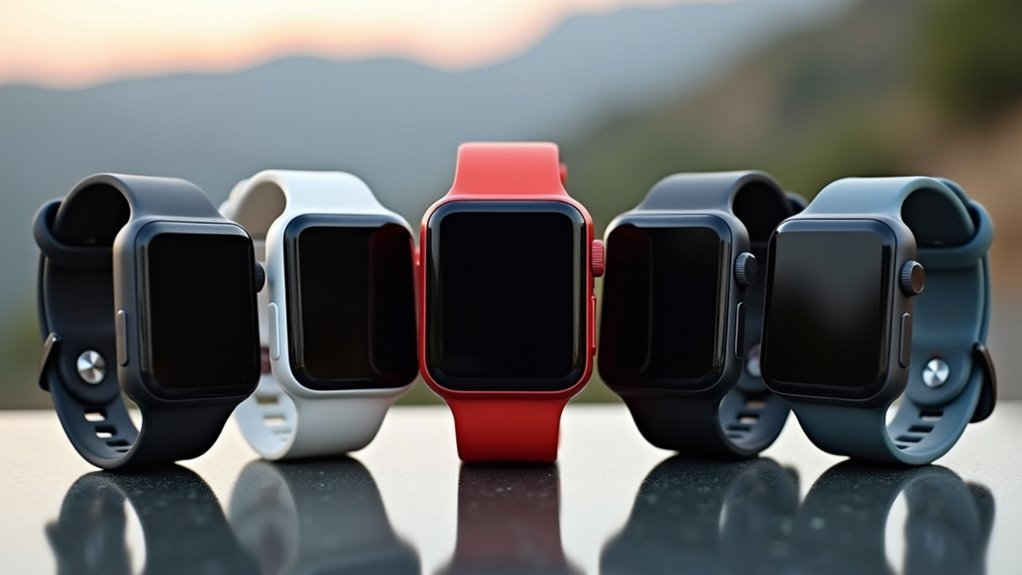You’ll gain unprecedented insight into your body’s stress response through advanced heart rate variability monitoring that tracks your autonomic nervous system in real-time. Sport watches detect stress patterns with 95.45% accuracy, monitor cardiovascular health continuously, and assess sleep quality to optimize recovery. They’ll help you identify personal stress triggers, develop targeted intervention strategies, and understand how different activities impact your well-being. This extensive data empowers you to make informed decisions about your training and lifestyle adjustments for enhanced performance and recovery.
Real-Time Stress Detection Through Heart Rate Variability

While traditional stress monitoring relies on subjective feelings or visible symptoms, your sport watch can detect stress objectively through heart rate variability (HRV) measurements. HRV measures fluctuations in time between heartbeats, reflecting your autonomic nervous system’s activity. When you’re stressed, your sympathetic nervous system activates, decreasing HRV. During recovery, your parasympathetic system increases HRV levels.
Your smartwatch uses advanced sensors and algorithms to analyze these R-R interval differences in real-time, providing immediate stress insights. Research demonstrates that machine learning models can achieve 95.45% accuracy in stress-related risk classification using HRV parameters.
Modern wearable devices offer accuracy comparable to medical EKG equipment, making continuous monitoring accessible. This technology allows you to identify stress patterns during various activities, from intense workouts to daily tasks, enabling proactive stress management rather than reactive responses.
Cardiovascular Health Monitoring for Enhanced Recovery
Beyond basic stress detection, your sport watch’s cardiovascular monitoring capabilities provide deeper insights into your body’s recovery patterns and overall heart health.
Continuous heart rate monitoring tracks your heart’s performance over time, while ECG apps detect irregular rhythms like atrial fibrillation. Blood oxygen saturation tracking reveals how efficiently your cardiovascular system delivers oxygen to your muscles during recovery.
Multi-path heart rate sensors capture subtle changes in heart activity, providing accurate data for informed recovery decisions. You’ll receive alerts for abnormal heart activity, enabling early detection of potential issues. A low resting heart rate is associated with improved health and longevity, making it an important metric for tracking your fitness progress.
This extensive cardiovascular data helps you customize exercise plans based on your current heart health status, optimizing your recovery strategy through data-driven insights that support long-term wellness goals.
Sleep Quality Assessment and Recovery Optimization
As your body cycles through different sleep stages each night, your sport watch captures detailed data about sleep onset, duration, and the critical deep and REM phases that drive athletic recovery.
Devices like the Oura Ring and WHOOP excel at detecting these stages, though they can overestimate total sleep time.
You’ll find sleep onset latency particularly valuable if you struggle with falling asleep. Your device tracks this metric alongside sleep architecture changes over time, helping you identify patterns that correlate with improved performance.
Since athletes often need more sleep for ideal recovery, your tracker’s duration estimates guide your rest requirements. Professional reviewers typically spend weeks to months testing these devices in real-world scenarios to evaluate their accuracy in tracking sleep patterns and recovery metrics.
The data reveals how different sleep stages contribute uniquely to recovery, enabling you to tailor bedtime routines and environment adjustments for better sleep quality.
Personalized Stress Management and Intervention Strategies
When your sport watch identifies elevated stress patterns, it’s time to develop targeted intervention strategies that work specifically for your lifestyle and stressors.
You’ll need to experiment with different techniques like mindfulness, breathing exercises, or physical activity to discover what’s most effective for you. Keep track of which methods consistently reduce your stress levels and improve your well-being.
Your watch data helps identify specific triggers and timing patterns, allowing you to create personalized intervention plans. Research shows that multimodal approaches combining education, peer support, and personalized feedback can significantly enhance stress management effectiveness compared to single-strategy interventions.
You might find that combining approaches—such as morning meditation with evening walks—yields better results than single techniques.
Data-Driven Insights for Behavioral Pattern Recognition

The continuous data stream from your sport watch creates a powerful foundation for understanding your unique stress patterns and behaviors. By tracking stress metrics like heart rate variability and electrodermal activity over time, you’ll identify specific triggers and recovery patterns that affect your well-being.
| Data Type | Behavioral Insight |
|---|---|
| HRV Fluctuations | Stress response to activities |
| Recovery Metrics | Ideal rest requirements |
| Activity Correlation | Exercise impact on stress |
| Sleep Patterns | Recovery effectiveness |
Your device recognizes when certain situations consistently elevate stress levels, enabling targeted interventions. You’ll discover how different activities, sleep quality, and daily routines influence your stress recovery. This pattern recognition empowers you to make informed lifestyle adjustments, enhancing your stress management approach based on concrete data rather than guesswork. Understanding your personal baselines becomes crucial for interpreting these stress measurements accurately and making meaningful improvements to your overall well-being.
Frequently Asked Questions
Are Sport Watches as Accurate as Medical Devices for Stress Monitoring?
Sport watches aren’t as accurate as medical devices for stress monitoring. You’ll experience up to 20% heart rate errors and reduced precision during exercise. Medical devices use ECG technology, while you’re getting less reliable PPG sensor readings.
How Long Does the Battery Last With Continuous Stress Tracking Enabled?
You’ll get 1-2 days with continuous stress tracking instead of the usual week-plus. High-end models like Garmin might stretch to 30 hours, but expect frequent charging with full monitoring enabled.
Can Sport Watches Work Effectively for People With Existing Heart Conditions?
You’ll find sport watches highly effective for heart conditions, with Apple Watch showing 97.5% sensitivity for atrial fibrillation detection. They’ll provide continuous monitoring and early alerts that traditional methods can’t match.
What’s the Price Difference Between Basic and Advanced Stress Tracking Features?
You’ll find basic stress tracking watches cost $50-$100, offering simple heart rate monitoring, while advanced models run $250-$600+ with AI-driven insights, continuous HRV tracking, and personalized stress management features.
Do All Major Sport Watch Brands Use the Same Stress Algorithms?
No, you’ll find each major sport watch brand uses different proprietary stress algorithms. While they all rely on heart rate variability, their processing methods, scoring systems, and interpretations vary considerably between manufacturers.





Leave a Reply